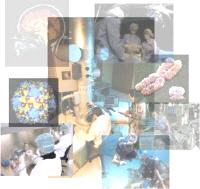|
 |
Page d'accueil Actions engagees Actions engagees Axe thérapeutique Axe thérapeutique Cancerologie Cancerologie
|
 |
 |
|
08 janvier 2009: Pré-requis pour les essais cliniques pour les biothérapies et les produits biologiques
Quelles exigences pharmacologiques et toxicologiques avant les essais cliniques ? Quels points de blocage ? Hafid Belhadj, Président de l'AFPREMED, expert à l'AFSSAPS EFS Pyrénées-Méditerrannée, Toulouse
01 juillet 2010: Les nanotechnologies en cancérologie : projets, applications cliniques et enjeux dans le Cancéropôle GSO (LAAS, UPS-Toulouse)
Présentation des travaux de nanotoxicologie réalisés par le Dr BELHADJ-TAHAR : Expertise toxicologique exigée avant l’introduction chez l’homme d’un nouvel agent anticancéreux dérivant de la nanotechnologie: l’expérience Toulousaine.
Le savoir-faire et l'Expertise de l'AFPreMed dans le domaine de la toxicologie et notamment la nanotechnologie, garantissent le passage avec succès de la phase critique : Préclinique ---> Clinique. A ce jour, nous avons aidé plusieurs biotechs à concrétiser leur projet de développement de pharmaceutiques innovants. Par ailleurs, nous appliquons un nouveau concept d'Interface intégrative qui opère une véritable dynamique d'échange inter-équipe (osmose) dans l'espace neutre défini par l'AFPreMed.
Schéma résumant le rôle de l'AFPreMed dans la coodination des études précliniques. [106 KB]
20 octobre 2010: l'AFPreMed a présenté "L’expertise toxicologique d’un nouvel agent thérapeutique anticancéreux issu de la biotechnologie en vue de sa première administration à l’homme" lors des 6èmes journées du cancéropôle grand Sud-Ouest , 19-21/10/2010 Toulouse. [Programme]
23 novembre 2010: L’AFPREMED a été invitée au 2éme Symposium des pôles de compétitivité français et des créneaux d’excellence québécois organisé conjointement par la France et le Québec. Ce Symposium a été l’occasion d’échanges fructueux sur les technologies médicales et les thérapies innovantes issues de la biotechnologie qui intéressent tout particulièrement l’AFPREMED...[lire le compte rendu [24 KB]
]
|
 |
|
|
25 novembre 2016: A l'occasion des 12emes journées de Cancéropôle Grand Sud-Ouest (23-25novembre 2016 à Montpellier), Dr Belhadj-Tahar a présenté pour la première fois les résultats des travaux avancés sur une thérapie anticancéreuse innovante combinant un supravecteur avec des sondes ciblant la tumeur du foie. Son effet thérapeutique est indépendant des caractéristiques intrinsèques et extrinsèques de la tumeur (1). Il s'agit là d'un bel exemple d'une collaboration franco-chinoise réussie (menée conjointement par les équipes du Pr Yang et du Dr Belhadj-Tahar).
Pour rappel: l'hépatocarcinome se classe au 5eme rang des cancers les plus fréquents dans le monde avec plus de 500.000 nouveaux cas par an, son pronostic est sombre: c'est la 3eme cause de mortalité par le cancer.
(1) titre de la communication:
"Preclinical studies of new In situ therapeutic agent derived from dendrimer combined with Nitro-Imidazole rhenium-188 complex."
G. YANG, N. SADEG and H. BELHADJ-TAHAR |
|
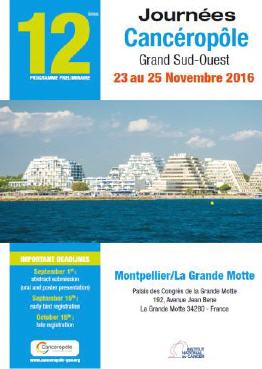 |
 |
Affiche des 12emes JC-GSO 2016 -
|
|
|
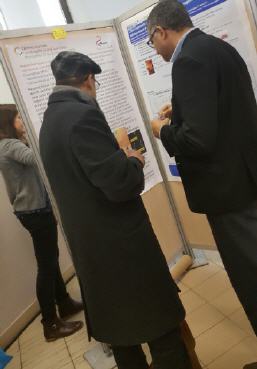 |
 |
Communication Affichée - Exposé des travaux de Nanomédecine_AFPreMed
|
|
|
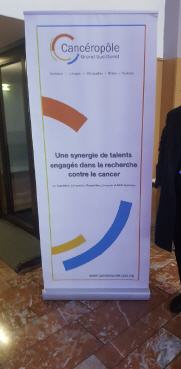 |
 |
Une synergie des talents pour vaincre le cancer - AFPREMED est engagée dans l'axe de recherche translationnelle
|
|
13èmes Journées GSO - Poitiers 2017 |
|
 |
|
13èmes Journées GSO - Poitiers 2017 |
le 17/11/2017
Abstract : P314
Acute toxicology and biodistribution preclinical studies of new 188-Rhenium and 99m-Technetium bearingnitro- Imidazolic probe (NGT1)
Hafid BELHADJ-TAHAR, Guanghua YANG, Nouredine SADEG
AFPREMED
Radiopharmaceuticals are used in two main fields of medicine: scintigraphic diagnosis and targeted anticancertherapy. Radiopharmaceuticals for diagnostic use gamma photon emitting radioisotopes (Technetium-99m, Zirconium-89, Gallium-67), whereas particle emitters (Rhenium-188, Yttrium-90) are reserved fortherapy. It should be noted that we are currently seeing a renewed interest in radiopharmaceuticals due totheir application in the field of nanomedicine, which aims to improve the specificity and therefore the effectiveness of the targeted therapy in a decisive way. In this context, we recently launched a research project on the synthesis and development of technetium and rhenium-bearing immidazole probes for the targeting of hypoxic tumors. In this paper we report the results of preclinical studies concerning the acute toxicology and the biodistribution in rats of an imidazole probe (NGT1): 1-Nitro-1H-Imidazole-Methyl-1,2,3-Triazol-Methyl-Di- (2-Pycolyl) Amine.
Methods : The probe was synthesized according to the protocol described by Yang et al (1). The In vivo studies were carried out in accordance with the guidelines of Decree No. 87-848 of 19 October 1987 on experiments and experiments in animals. The labeled Tc-NGT1 probe solution dosed at 99m 0.087mCi / μL (3.34 MBq / μL) was prepared by reacting 330 μL of 1.725 mM NGT1 in physiological solution with radioactive carbonyl-technetium (28.86 mCi ) and heated at 60 ° C for 1 hour and then filtered via a 0.22 μm filter. Eight wistar RjHan: Wi rats were devided into 2 groups:
Group 1: 6 rats receiving 0.1 ml of the labeled solution of 99mTc-NGT1 into IV
Group 2: 2 control rats receiving 0.1 ml of the saline solution into IV
The animals were observed for 1 day after the administration and then the biodistribution was obtained by measuring the radioactivity present in each organ; as well as the anatomo-pathological examination was carried out.
Results: No mortality nor symptoms were observed. No anotomopathological abnormality was observed on the different organs. The labeled probe showed a very large distribution volume that was estimated at 167L.Kg -1. The digestive tract was particularly targeted by NGT1 (Liver: 1.59% Di / g, Small Intestine 1.61% Di / g, Stomach 2.06 % Di / g and Pancreas 1.67% Di / g where % Di / g is % injected dose by gram of studied organ).
Conclusion: This Nitro-Imidazole probe (NGT1) seems to be suitable to targetting therapy according to its biodistribution and innocuity characteristics.
1- Yang G, Sadeg N and Belhadj-Tahar H. Drug Des 2017, 6:1
Cf: communication intégrale [557 KB]
|
Communication IMDENDRIM |
1-5/02/2020
Lors de l'Oncoweek 2020, nous avons exposé nos travaux collaboratifs :
Conception, Preclinical and clinical validations of "Imdendrim", a new anti-cancer agent derived from the nanotechnology.
Hafid BELHADJ-TAHAR1, Nouredine SADEG2 and Guanghua YANG3
1- Research and expertise group, AFPREMED, Toulouse (France)
2- NanoGun Technolgy (NGT), Rue Henry Bequerel, 60230 Chambly (France)
3- Zhejiang Huayi Hospital, Tonglu (China)
<programme> |
|
 |
 |
Affiche -
|
|
|
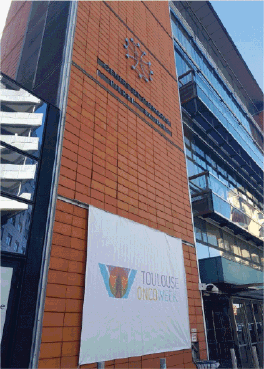 |
 |
Palais des congrès (Pierre BAUDIS) -
|
|
|
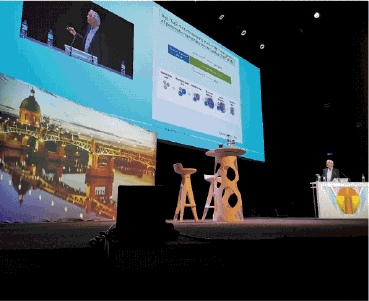 |
 |
Aditorium -
|
|
|
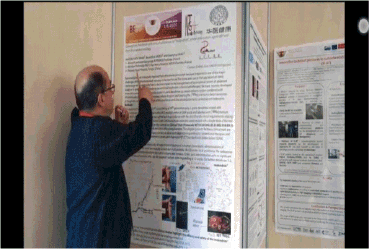 |
 |
Communication de l'AFPREMED -
|
|
Version imprimable
|
 |
 Contact Contact |
 |
 |
 |
|


